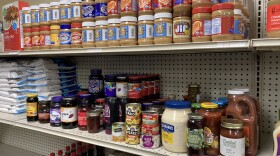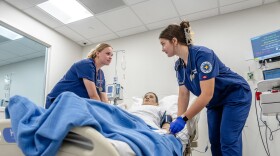In the next decade, NASA is promising to send men and women back to the moon. Plus, there are international plans to start assembling a platform near the moon, called Deep Space Gateway, from which to set forth on missions to Mars or elsewhere in the solar system.
Already, NASA is testing ways to make it easier for astronauts to grow some of their food during the long trips. The Gilroy Astrobotany Lab at the UW-Madison is playing a key role in that effort, with tests on the International Space Station on adaptable plants like Arabidopsis. That's a small, flowering plant that's related to cabbage and mustard.
Richard Barker is a research scientist at the lab. He says while many of us prefer locally grown food, astronauts usually don't have that option.
"That locally-grown food comes from many hundreds of miles below them, on Earth. We want to try to ensure they have all the nutrition they need to function, so they can do dangerous things like spacewalks, and eventually, land on Mars," Barker said.
Barker began a Lake Effect conversation with WUWM's Chuck Quirmbach by defining the term astrobotanist:
Support is provided by Dr. Lawrence and Mrs. Hannah Goodman for Innovation reporting.

Do you have a question about innovation in Wisconsin that you'd like WUWM's Chuck Quirmbach to explore? Submit it below.
_






